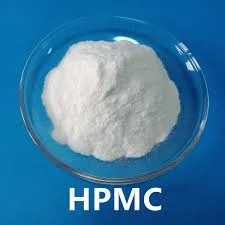
11-р сар . 24, 2024 19:53 Back to list
hydroxypropyl methylcellulose uses
Exploring the Uses of Hydroxypropyl Methylcellulose A Versatile Polymer
Hydroxypropyl methylcellulose (HPMC) is a semi-synthetic polymer derived from cellulose, a natural polymer made from plant cell walls. As an intriguing compound, HPMC has gained widespread attention across various sectors due to its unique properties, including water solubility, film-forming ability, and thickening capabilities. This article will delve into the diverse uses of HPMC, illustrating its importance in a variety of industries.
1. Pharmaceutical Applications
One of the most crucial applications of HPMC is in the pharmaceutical industry. Its ability to form gels and retain water makes it a valuable excipient in drug formulations. HPMC is often utilized as a binder in tablets, enhancing the cohesion of active ingredients and improving the overall stability of the formulation. Furthermore, it is employed in controlled-release formulations, where it acts as a rate-controlling agent. By using HPMC, pharmaceutical manufacturers can achieve a sustained release of medication, leading to prolonged therapeutic effects and improved patient compliance.
2. Food Industry Uses
In the food industry, HPMC serves multiple functions, primarily as a thickening and stabilizing agent. It is commonly added to products such as sauces, dressings, and bakery items to enhance texture and viscosity. HPMC is also a popular ingredient in gluten-free baking, as it helps mimic the elasticity and structure typically provided by gluten. Additionally, it can be used in low-fat and reduced-calorie products to improve mouthfeel and prevent separation, thereby enhancing the overall eating experience.
3. Construction and Building Materials
HPMC is widely used in construction applications, particularly in cement-based products. Due to its water-retaining properties, HPMC is added to mortars and plasters to improve workability and adhesion while minimizing cracking and shrinkage during the curing process. Additionally, it helps control the drying time of these materials, allowing for better finishing and application. The versatility of HPMC makes it a preferred additive in various building materials, including tile adhesives and drywall formulations.
hydroxypropyl methylcellulose uses

4. Cosmetic and Personal Care Products
The cosmetic industry also benefits significantly from HPMC. Its ability to form films and enhance texture makes it an ideal thickener and stabilizer in lotions, creams, shampoos, and conditioners. HPMC can improve the spreadability of products, providing a smoother application experience for consumers. Moreover, it serves as a moisturizing agent, helping to lock in hydration and enhance skin feel. Its safety and compatibility with a variety of ingredients make HPMC a favored component in personal care formulations.
5. Agriculture and Horticulture
In agriculture, HPMC is utilized in the formulation of herbicides, pesticides, and fertilizers. Its water-retaining properties allow for the improvement of these products' efficacy, ensuring adherence to plant surfaces and prolonged action. Additionally, HPMC can be used to create hydrogels that improve soil moisture retention, contributing to sustainable agriculture practices. These applications support healthier crops while reducing the need for excessive watering.
6. Other Industrial Applications
Beyond the aforementioned uses, HPMC finds its way into numerous other industrial applications. It is used in the creation of adhesives, coatings, and inks, where it serves as a thickening and stabilizing agent. Furthermore, HPMC is employed in the production of non-woven fabrics and as a component in various manufacturing processes.
Conclusion
Hydroxypropyl methylcellulose stands out as a remarkably versatile polymer with a broad spectrum of applications across numerous industries. From pharmaceuticals and food products to construction materials and personal care items, HPMC demonstrates its invaluable properties that enhance performance and functionality. As industries continue to explore and innovate with this compound, its importance is likely to burgeon, solidifying HPMC's status as a key ingredient in modern formulations. As sustainability and efficiency become increasingly paramount in various sectors, compounds like HPMC will play a crucial role in meeting these challenges while enhancing quality and performance.
-
Versatile Hpmc Uses in Different Industries
NewsJun.19,2025
-
Redispersible Powder's Role in Enhancing Durability of Construction Products
NewsJun.19,2025
-
Hydroxyethyl Cellulose Applications Driving Green Industrial Processes
NewsJun.19,2025
-
Exploring Different Redispersible Polymer Powder
NewsJun.19,2025
-
Choosing the Right Mortar Bonding Agent
NewsJun.19,2025
-
Applications and Significance of China Hpmc in Modern Industries
NewsJun.19,2025







